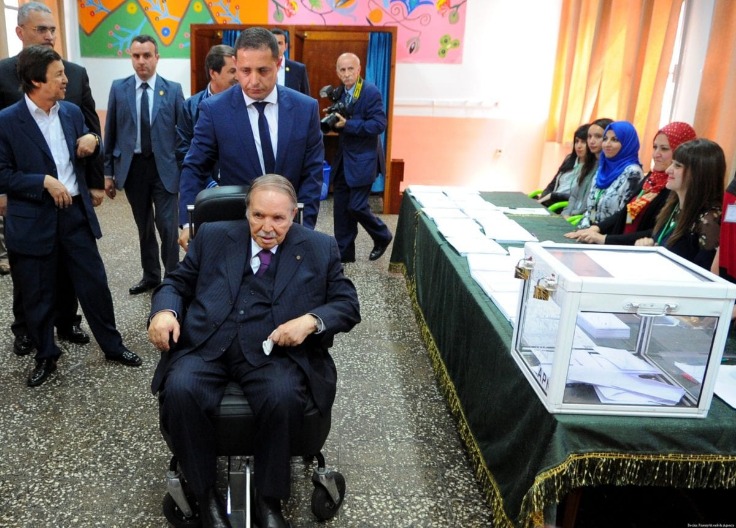Overview of Algeria’s Currency System
Algeria’s currency system is centered around the Algerian dinar, which serves as the official monetary unit of the country. Introduced in 1964, the dinar has played a vital role in facilitating trade, commerce, and economic stability within Algeria. The currency is managed and regulated by the Bank of Algeria, ensuring its stability and integration into the national economy. Understanding the structure and functioning of Algeria’s currency system provides insight into the country’s economic landscape and monetary policies.
Historical Development of the Algerian Dinar
The Algerian currency system is centered around the Algerian dinar, which serves as the official currency of the country. Established to facilitate trade and economic stability, the dinar is subdivided into 100 centimes. Over the years, the currency has played a crucial role in Algeria’s economic development and monetary policy.
The historical development of the Algerian dinar dates back to the colonial period when the French franc was the dominant currency in Algeria. After gaining independence in 1962, Algeria introduced its own national currency to assert economic sovereignty. The first Algerian dinar was issued in 1964, replacing the Algerian franc at a fixed rate, marking Algeria’s move towards establishing a distinct monetary identity.
Since its inception, the Algerian dinar has undergone various changes in design, denominations, and security features to counter inflation and counterfeit activities. The Central Bank of Algeria manages the issuance and regulation of the currency, ensuring its stability and uniformity across the country. The dinar continues to be a symbol of national independence and economic resilience in Algeria today.
Legal Status and Currency Regulations
Algeria’s currency system is centered around the Algerian dinar (DZD), which is the official and legal tender of the country. The Algerian dinar is issued and regulated by the Central Bank of Algeria, ensuring control over currency supply and stability. The currency features various denominations, including banknotes and coins, that facilitate daily transactions and commerce within the nation.
Legally, the Algerian dinar is recognized as the sole currency authorized for use in the country, with strict laws governing its issuance, circulation, and usage. The government and the Central Bank impose regulations to prevent counterfeiting and unauthorized currency exchange, maintaining the integrity of the monetary system. Currency regulations also restrict the amount of dinar that can be exchanged or taken abroad, aiming to stabilize the economy and control foreign currency reserves.
Algeria’s currency regulations include measures such as licensing for currency exchange operations, limits on cash transactions, and adherence to international standards for financial transactions. Import and export of dinar are generally prohibited except under specific circumstances, and foreign currency transactions are facilitated through authorized channels. These regulations are designed to support economic stability, combat illicit financial activities, and ensure a controlled monetary environment within Algeria.
Key Features of the Algerian Dinar
The Algerian Dinar is the official currency of Algeria, playing a vital role in the country’s economy. It features a range of key characteristics that reflect both Algeria’s cultural heritage and modern monetary standards. Understanding its key features provides insight into its design, security, and regional significance.
Design and Security Features
The Algerian Dinar is the official currency of Algeria, characterized by its distinctive design and advanced security features to prevent counterfeiting. The banknotes feature prominent national symbols, historical figures, and cultural motifs that reflect Algeria’s rich heritage and history. The denominations are typically printed with vibrant colors and detailed artwork, making each note unique and easily recognizable.
Key security features of the Algerian Dinar include embedded watermarks, transparent windows, and metallic threads woven into the paper. Holographic strips and micro-printed text are increasingly utilized to enhance security, ensuring authenticity. Additionally, features such as color-shifting inks and ultraviolet (UV) responsive elements are incorporated into newer banknotes, providing multiple layers of verification against counterfeit notes. Overall, the design and security features of the Algerian Dinar aim to maintain the currency’s integrity and trustworthiness in everyday transactions.
Denominations and Coins
The Algerian Dinar (DZD) is the official currency of Algeria, featuring several key characteristics that reflect its national identity and economic history. The banknotes and coins are designed with cultural motifs, historic symbols, and national emblems, showcasing Algeria’s rich heritage.
The Algerian Dinar is subdivided into 100 cents. It is issued by the Central Bank of Algeria and is used primarily in everyday transactions across the country. The currency features both security elements and distinct designs to prevent counterfeiting.
Denominations of the Algerian Dinar include banknotes of various values, such as 200, 500, 1,000, 2,000, 5,000, and 10,000 DZD. Coins are issued in denominations of 1, 2, 5, 10, 20, and 50 DZD, with some coins featuring innovative materials and designs. The coins often display national symbols like the crescent and star, reflecting Algerian pride, while banknotes depict prominent buildings, historical figures, and cultural elements.
Overall, the Algerian Dinar’s notable features include its colorful and detailed banknotes, durable coins, various denominations designed for daily use, and symbols that emphasize the country’s history and identity.
Exchange Rates and Foreign Transactions
Understanding exchange rates and foreign transactions is essential for anyone dealing with international financial activities, especially in countries with complex currency systems like Algeria. The Algerian dinar (DZD) plays a pivotal role in both domestic and international trade, impacting how businesses and individuals exchange money across borders. Grasping the fundamentals of currency conversion and foreign transactions helps in making informed financial decisions and navigating the global market effectively.
Official Exchange Rate Policies
Algeria’s currency, the Algerian dinar, operates within a framework influenced by exchange rate policies and foreign transaction regulations. The official exchange rate is regulated by the country’s central bank, ensuring stability and controlling inflation. Historically, Algeria maintained a fixed or semi-fixed exchange rate system to protect its economy from external shocks and to support its primary industries, especially hydrocarbons.
Foreign transactions involving the Algerian dinar are subject to strict government controls to prevent capital flight and manage foreign reserves. The central bank oversees the licensing for currency exchange operations, and foreign currency accounts are limited for residents. Algeria has sometimes implemented policies such as multiple exchange rates or currency controls to safeguard its economic interests and promote economic stability.
Overall, Algeria’s official exchange rate policies aim to balance attracting foreign investment and safeguarding national monetary stability, although these policies can sometimes meet criticism for limiting market flexibility and foreign trade efficiency. Monitoring these policies is essential for understanding the dynamics of Algeria’s currency and its impact on international transactions.
Currency Exchange Agencies and Limits
In Algeria, the official currency is the Algerian Dinar (DZD), and understanding exchange rates is essential for both residents and travelers engaging in foreign transactions. Exchange rates fluctuate based on various economic factors and are influenced by currency exchange agencies operating within and outside the country. These agencies facilitate currency conversions, allowing individuals and businesses to exchange their Dinars for foreign currencies or vice versa.
Currency exchange agencies in Algeria are regulated by the Central Bank of Algeria to ensure transparency and stability in transactions. They usually set their rates based on the prevailing market conditions, adding a margin for profit. It is important for users to compare rates across different agencies to find the most favorable deal. In addition, there are limits imposed on the amount of foreign currency that can be purchased or transferred, primarily to control capital flows and prevent illicit activities.
Algeria also has specific regulations regarding foreign transactions, including permissible limits for currency exchange and transfer abroad. Travelers and businesses are advised to comply with these limits to avoid legal complications. Generally, individuals can carry a certain amount of foreign currency when entering or leaving the country, but exceeding these thresholds requires proper documentation and approval from authorities. Staying informed about current policies and exchange rates helps in making secure and cost-effective foreign transactions within Algeria.
Banking and Currency Management
Banking and currency management play a vital role in the economic stability and growth of any country. In Algeria, the management of the national currency, the Algerian dinar, is essential for maintaining financial stability, controlling inflation, and supporting economic development. The central bank oversees the issuance and regulation of currency, ensuring a balanced monetary system that fosters trust and facilitates both domestic and international trade.
Role of the Central Bank of Algeria
The Central Bank of Algeria plays a crucial role in the management of the country’s banking system and currency. Its primary responsibilities include issuing and regulating the Algerian dinar, ensuring monetary stability, and controlling inflation. The bank formulates and implements monetary policies that influence interest rates, money supply, and overall economic stability. Additionally, it supervises commercial banks and financial institutions to maintain a sound banking environment. The Central Bank also manages Algeria’s foreign exchange reserves, which are vital for stabilizing the national currency against external shocks and fluctuations. By performing these functions, the Central Bank of Algeria helps promote economic growth, confidence in the financial system, and the overall stability of the Algerian currency in both domestic and international markets.
Banknote and Coin Issuance
Algeria’s currency management involves the issuance and regulation of its banknotes and coins to ensure economic stability and facilitate trade. The Central Bank of Algeria is responsible for overseeing the monetary system, controlling the supply of currency, and maintaining the integrity of the national currency, the Algerian dinar (DZD).
The Central Bank issues banknotes and coins that are used in everyday transactions across the country. These denominations are carefully designed to reflect national symbols, culture, and history, helping to foster national identity and confidence in the currency. The banknotes include various security features to prevent counterfeiting and preserve the currency’s integrity.
Banknote and coin issuance in Algeria is a systematic process that involves designing, printing, minting, and distributing these physical forms of money. The central bank ensures an adequate supply of currency to meet the demands of the economy while preventing inflation and maintaining monetary stability.
- Design and Security: The Algerian banknotes incorporate advanced security features such as watermarks, holograms, and serial numbers to prevent forgery.
- Denominations: The banknotes range from small denominations like 200 DZD to higher values such as 2000 DZD, while coins are issued in denominations like 5, 10, 20, and 50 DZD.
- Distribution: The central bank manages distribution channels to ensure currency availability across urban and rural areas.
- Replacement and New Issues: Periodically, new banknotes and coins are introduced to replace outdated currency, upgrade security features, or reflect cultural themes.
Overall, Algeria’s currency management aims to promote economic stability, secure transactions, and national confidence in its monetary system.
Economic Impact of the Algerian Dinar
The Algerian Dinar plays a crucial role in shaping the country’s economic landscape, influencing trade, inflation, and monetary stability. As the official currency of Algeria, it reflects the nation’s economic health and policy decisions. Understanding the impact of the Dinar on Algeria’s economy provides insight into the country’s financial resilience and potential for growth in a globalized world.
Inflation and Currency Stability
The Algerian dinar (DZD) plays a crucial role in the country’s economy, impacting inflation rates and overall currency stability. As Algeria’s primary medium of exchange, fluctuations in the dinar can influence consumer purchasing power, investment climate, and economic growth. Persistent inflationary pressures often diminish the real value of savings and income, thereby affecting the standard of living. Currency stability is vital for maintaining investor confidence, supporting imports and exports, and ensuring economic resilience amidst external shocks. Government policies aimed at managing inflation and stabilizing the dinar are essential for fostering sustainable economic development in Algeria.
Foreign Investment and Currency Controls
The Algerian Dinar plays a crucial role in the country’s economic stability and development, influencing foreign investment and currency policies. As the official currency of Algeria, the Dinar’s value is affected by government regulations, market forces, and economic performance. Currency controls are often implemented to stabilize the exchange rate, control inflation, and manage foreign reserves, but they can also limit the free flow of capital and deter foreign investors. Despite efforts to attract foreign direct investment, restrictive currency controls and fluctuating Dinar value pose challenges for investors seeking to capitalize on Algeria’s resource-rich economy. Balancing monetary stability with an open investment climate remains a key concern for policymakers aiming to foster sustainable economic growth while safeguarding national financial interests.
Future Outlook and Currency Developments
The future outlook for Algeria’s currency is shaped by a combination of economic reforms, global market trends, and regional stability. Understanding the developments in currency value and exchange rates is crucial for both investors and policymakers as they navigate challenges and opportunities. As Algeria continues to diversify its economy and strengthen its financial institutions, the currency’s trajectory will play a vital role in shaping the country’s economic growth and stability in the coming years.
Potential Currency Reforms
The future outlook for Algeria’s currency, the Algerian dinar, is poised for potential transformations influenced by economic reforms and regional developments. As the country continues to diversify its economy and seek stability amidst fluctuating oil prices, adjustments to monetary policy and currency management strategies may become more prominent. Anticipated reforms could aim to strengthen the dinar’s value, enhance foreign exchange reserves, and promote a more flexible exchange rate regime to better accommodate economic challenges.
Currency developments in Algeria are likely to focus on modernizing the financial system and reducing reliance on traditional dollarized transactions. There is ongoing interest in implementing measures that could eventually lead to partial liberalization of the currency market, facilitating greater foreign investment and trade. These changes may include tightening currency controls, reforming the official exchange rate, and exploring mechanisms to stabilize the dinar against global currencies.
Potential currency reforms are driven by the need to bolster economic resilience and attract international investors. While careful planning and phased implementation are expected to avoid economic shocks, project initiatives such as establishing a more market-driven exchange rate and improving monetary policy transparency might be pursued. Such reforms could support Algeria’s long-term economic stability and position the dinar within a broader, more integrated regional financial framework.
Impact of Digital Currency Initiatives
The future outlook for Algeria’s currency is poised to evolve significantly as digital currency initiatives gain momentum worldwide. The adoption of digital currencies, including central bank digital currencies (CBDCs), could enhance transaction efficiency, reduce costs, and improve financial inclusion within the country. Algeria’s government and financial institutions are observing these developments closely to potentially integrate digital currency solutions that align with their economic strategies.
Currency developments in Algeria are likely to be influenced by both internal economic reforms and external technological advancements. As neighboring countries and global markets embrace digital currencies, Algeria may consider issuing its own digital dinar or establishing frameworks to facilitate digital transactions. This shift could strengthen Algeria’s monetary system, increase transparency, and foster greater stability in its financial markets.
The impact of digital currency initiatives in Algeria could extend beyond convenience, potentially boosting formal economy participation and reducing reliance on cash. Such initiatives can also help combat illicit financial activities by establishing more traceable and secure payment channels. Overall, digital currency initiatives are expected to play a transformative role in shaping Algeria’s future monetary environment, aligning it with global digital financial trends and enhancing economic resilience.





0 Comments